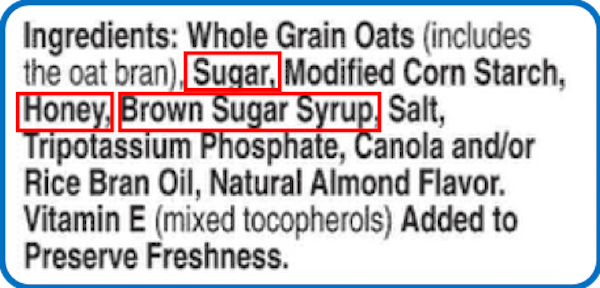 Children who frequently consume foods and drinks containing natural and/or added sugars during the day are more likely to develop tooth decay than those who consume them less often. Parents and Head Start staff may not know that many of the foods and drinks they give children contain sugar.
Children who frequently consume foods and drinks containing natural and/or added sugars during the day are more likely to develop tooth decay than those who consume them less often. Parents and Head Start staff may not know that many of the foods and drinks they give children contain sugar.
This Brush Up on Oral Health tip sheet is all about sugar. It describes how consuming foods and drinks containing sugar often during the day increases the risk of developing tooth decay. It shares information about how to read food labels to identify hidden sugars in products and tips for Head Start staff to share with parents about limiting their child’s sugar intake.
How Often Children Consume Foods and Drinks with Sugar During the Day Matters
Sugar plays a key role in tooth decay. Many foods, like milk and milk products, fruit, vegetables, grains, and processed and prepared foods, contain sugar.
 Bacteria that cause tooth decay break down foods and drinks that contain sugar to form acid. Each time a person consumes foods or drinks containing sugar, acid is in the mouth for 20 to 40 minutes. Children who are fed meals and snacks at scheduled times are at lower risk for developing tooth decay than children who are fed often during the day.
Bacteria that cause tooth decay break down foods and drinks that contain sugar to form acid. Each time a person consumes foods or drinks containing sugar, acid is in the mouth for 20 to 40 minutes. Children who are fed meals and snacks at scheduled times are at lower risk for developing tooth decay than children who are fed often during the day.
The peaks in the top graph (Regularly Scheduled Meals and Snacks = Few Acid Attacks) show that acid is in the child’s mouth five times during the day, for a total of a little more than 1½ hours. The peaks in the bottom graph (Fed Often During the Day = Many Acid Attacks) show that acid is in the child’s mouth nine times during the day, for a total of 3 hours (about twice as long as for children who are fed meals and snacks at scheduled times). If a child consumes food and drinks containing sugar often, over time the child is more likely to develop tooth decay.
Finding Hidden Sugar
Many foods and drinks contain added sugar. Sugar in foods can be listed by many different names. The best place to check for sugar is in the ingredients list on the food label. Look for words like:

- Beet sugar
- Brown sugar
- Cane sugar
- Corn sweeteners
- Corn syrup
- Cane juice
- High fructose corn syrup
- Honey
- Malt syrup
- Maple syrup
- Molasses
- Raw sugar
- White sugar
Tips to Help Parents Limit Their Child’s Sugar Intake
Head Start staff can help prevent tooth decay by teaching parents about hidden sugar in food and drinks. Staff can also provide information on feeding and eating habits that can reduce their child’s risk for developing tooth decay.
- Explain to parents the role sugar plays in the tooth decay process and that how often a child consumes foods and drinks containing sugar can make a big difference.
- Show parents how to identify sugars listed on ingredient labels.
- Work with parents to set up a schedule for serving meals and snacks.
- Encourage parents not to feed their child or graze on foods and drinks often through the day, especially those containing natural and/or added sugar.
Download a PDF version to print and share.
Read more:
Resource Type: Article
National Centers: Health, Behavioral Health, and Safety
Audience: Teachers and Caregivers
Series: Brush Up on Oral Health (BUOH)
Last Updated: April 26, 2023
